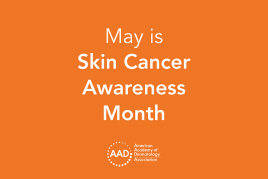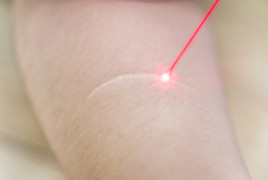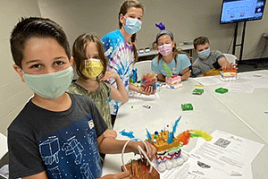Hair care: Hair loss (ages 11-13)
Good Skin Knowledge lesson plan
Time: 45 min
Objective
Students will be able to:
Identify three reasons people lose hair
Learn that hair loss can happen to anyone
Express their feelings about hair loss and how to treat those who are losing their hair
Materials
Assessment
During Opening and Closing, assess students’ discussion to see if they understand how hair affects the image of what beauty is.
During Introduction to New Material, gauge students’ understanding of material by seeing if they are able to answer which causes of hair loss are within our control and which are out of our control.
During Closing, evaluate if students have been able to reflect on what they learned during the lesson.
Opening
3 minutes
Start a discussion with the students:
What does “pretty” or “handsome” mean?
What does someone who is typically pretty or handsome look like?
If students are unresponsive, ask more pointed questions such as, “Does smooth skin make you pretty or handsome? Big muscles?” Eventually ask, “What about hair? Does hair make someone pretty?” Ask follow-up questions to hair question such as, “What kind of hair is considered ‘pretty’?”
Explain that today we will be focusing on beauty. We will see how many people lose their hair and what some of the consequences are.
Introduction to new material
25 minutes
Materials: Hair Control handout (enough for class)
Ask students, “Do you know anyone who has lost hair?” Prompt students by asking, “Maybe your dad? Or your grandfather? An uncle?”
Ask, “Why do you think they lost their hair?” If students are unresponsive, prompt students by giving them options such as: “Is it because they are tall? Do you think it’s because they are men? Or because they are older? Or because they wear hats?”
Ask, “Do women lose their hair?” and allows students to respond. Then ask, “Do children lose their hair?” and allows students to respond.
If students respond “yes” to either of the questions, follow-up by asking, “Why do they lose their hair?”
If students respond “no” to the questions, say, “Well what if I told you they did lose hair? And it’s actually more common than you think.
Explain, “We all lose hair. Every day we lose 50-100 strands. Men, women, and children can all lose their hair. Even though it may be common at certain ages to lose a lot of hair, people can lose hair at any age for different reasons.”
Pass out Hair Control handout and explains:
Here are some reasons people lose their hair. Some are completely out of our control—it happens without any help from us and we can’t prevent it—and others are within our control—we affect whether or not we lose hair. Some causes for hair loss can be both within our control and out of our control depending on where you live and what your life is like.
Let’s look at the sheet. On the left, it says, ‘Out of Our Control’ and on the right, it says ‘In Our Control.’
Things that are more towards the middle can either be in our control or out of it. Let’s take a look:
Alopecia: This is a condition that makes hair fall out quickly. It can come out completely or in patches. No one knows why it happens. A person with alopecia is not considered to be ‘sick.’ Alopecia is NOT contagious.
Cancer treatment: When some people get cancer, they treat it with something called chemotherapy. This helps kill the cancer to make them healthy. A side effect, or something else that can happen due to the treatment, is losing hair. But the benefit of treating the cancer is more important than losing hair, so the hair loss is out of the person’s control because they want to get better.
Nutrition: This is what you eat. The vitamins you get. This can be in our control because we can choose to eat our vegetables and eat healthy food. But for some people, this is not in their control because they may not be able to buy enough food to eat. When someone does not get enough of the right vitamins, it can make their hair fall out.
Styling Your Hair: If you straighten, blow dry, or curl your hair every day or often and don’t use anything to help protect your hair, it can damage your hair and cause it to fall out. Sometimes people put styling chemicals in their hair to make it straight or curly and this can cause some extra hair to fall out too.
Ask students which causes for hair loss are in our control and which are out of our control.
Take questions.
Guided practice
5-10 minutes Materials: Hair Today, Gone Tomorrow worksheet , pencils, paper
Explain they are going to do an activity.
Hand out Hair Today, Gone Tomorrow worksheet.
On the worksheet, I want you to write your reaction to what I am going to tell you:
You wake up tomorrow and you have no hair. No eyelashes. No eyebrows. How would you feel? How do you think others would see you? What do you think they would say? We’re not going to talk during this activity. It’s okay to be honest—you won’t have to share if you don’t want to.
You should also participate so students see you are also reflecting and taking this seriously.
After maybe 3-5 minutes (use judgment for length of time allotted for writing/reflecting), say you would like to share your thoughts and reflections from the activity.
Closing
5-10 minutes
Ask if anyone else would like to share what they wrote. If students are unresponsive, ask questions like, “How do you think someone would be treated who had alopecia?”
Expand on discussion using these talking points/explanations:
A lot of times people who are losing hair don’t feel beautiful because TV, magazines, and movies tell us that to be beautiful, you need a lot of shiny, perfect hair. Well, sometimes we can’t control it.
And even though we can control hair styling, we might accidentally burn a chunk of our hair off or use the wrong chemicals! It’s no reason not to feel beautiful.
It also is important to think about how you treat others because you may not know how they feel, and you want to make sure they know how beautiful they really are.
IMPORTANT
If there is a student in the class who suffers from hair loss, be very sensitive to the topic. It may be necessary to skip the questions that ask whether the students know anyone who has lost hair. During the activity, if the student clearly feels uncomfortable or clearly has alopecia, have the student write down how they feel, but do not pressure student to share or participate.
 Think sun protection during Skin Cancer Awareness Month
Think sun protection during Skin Cancer Awareness Month
 How to care for your skin if you have lupus
How to care for your skin if you have lupus
 Practice Safe Sun
Practice Safe Sun
 Sunscreen FAQs
Sunscreen FAQs
 Fade dark spots
Fade dark spots
 Hidradenitis suppurativa
Hidradenitis suppurativa
 Laser hair removal
Laser hair removal
 Scar treatment
Scar treatment
 Botox
Botox
 Kids' camp - Camp Discovery
Kids' camp - Camp Discovery
 Dermatologist-approved lesson plans, activities you can use
Dermatologist-approved lesson plans, activities you can use
 Find a Dermatologist
Find a Dermatologist
 Why choose a board-certified dermatologist?
Why choose a board-certified dermatologist?